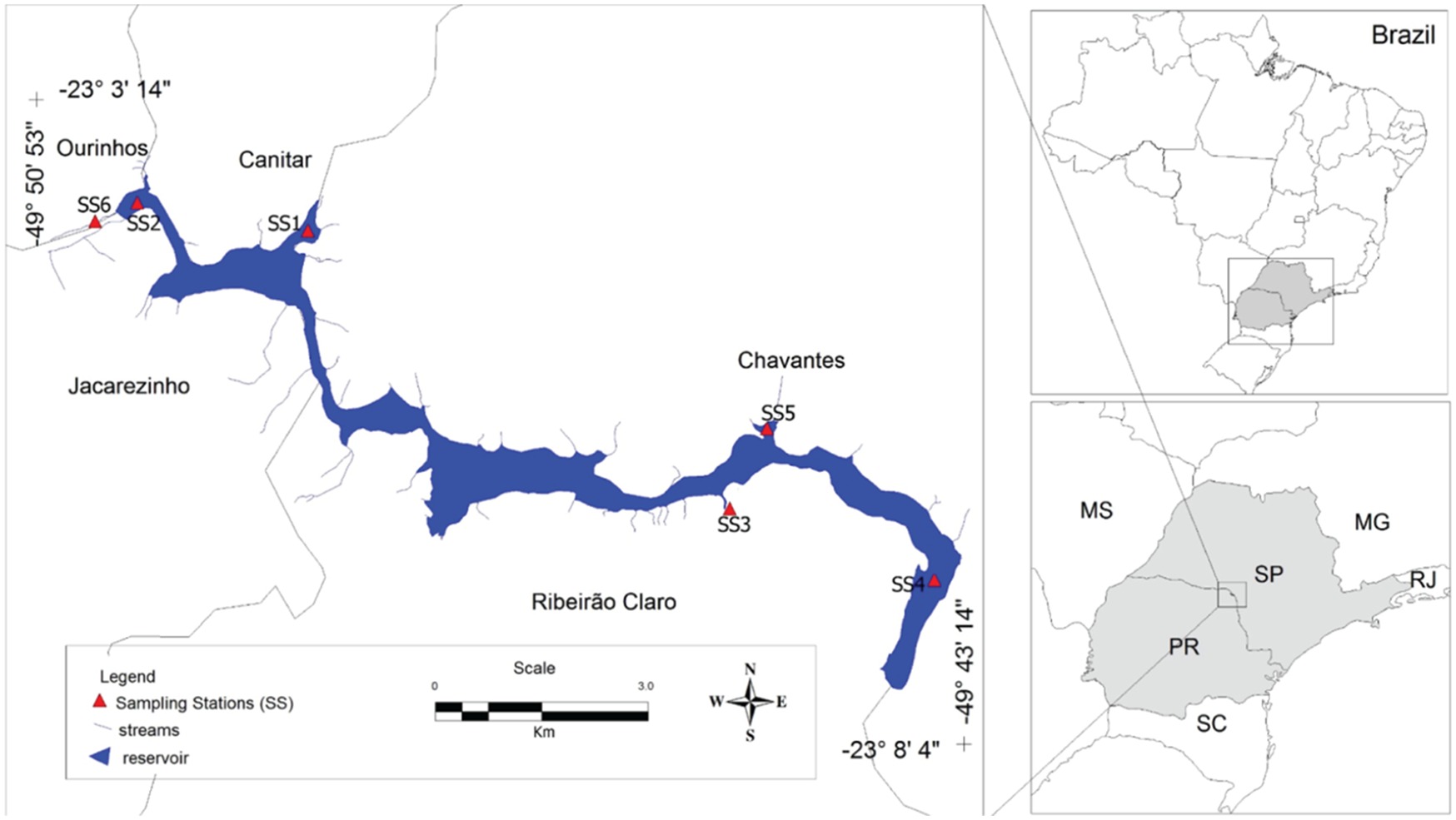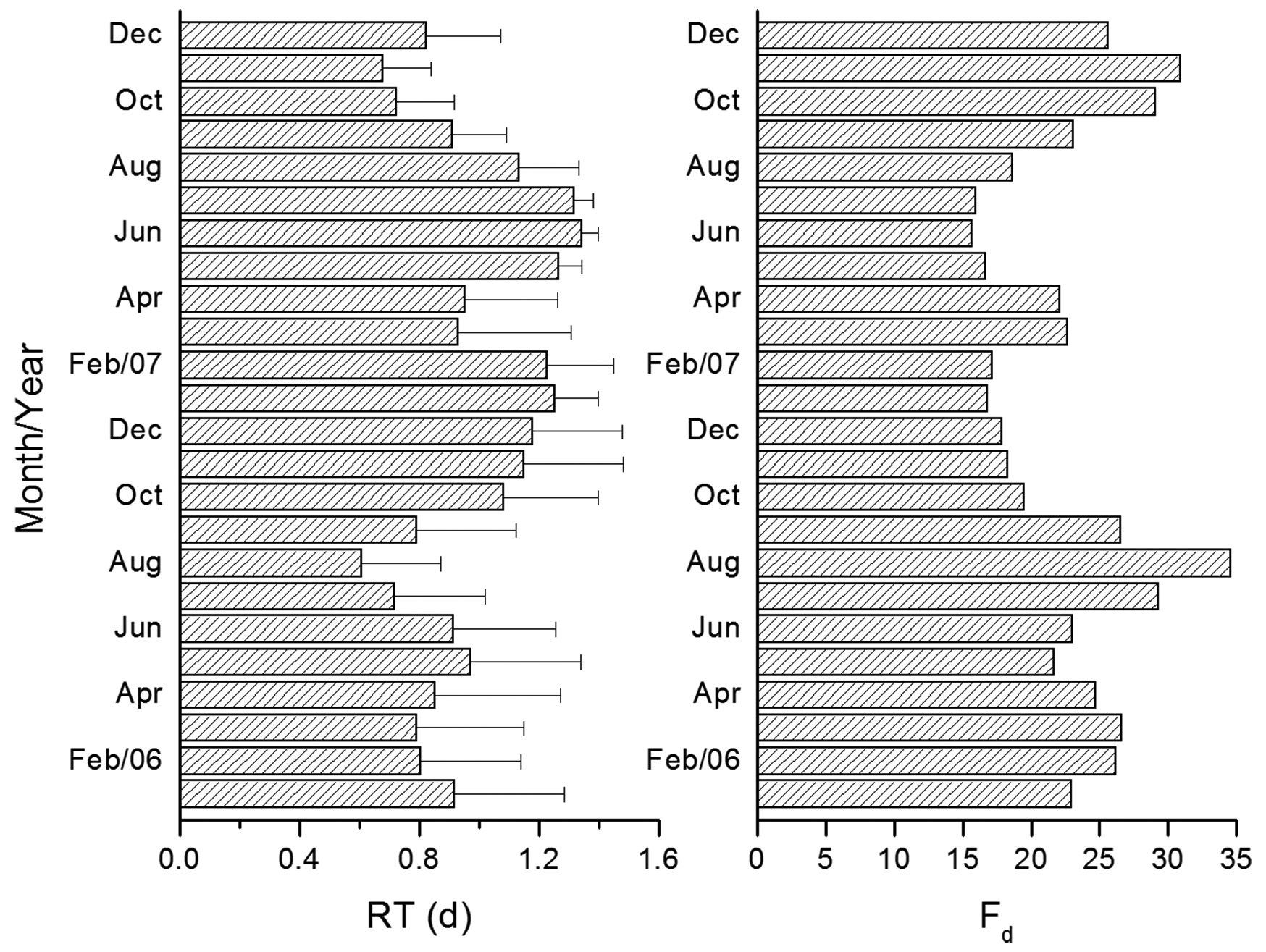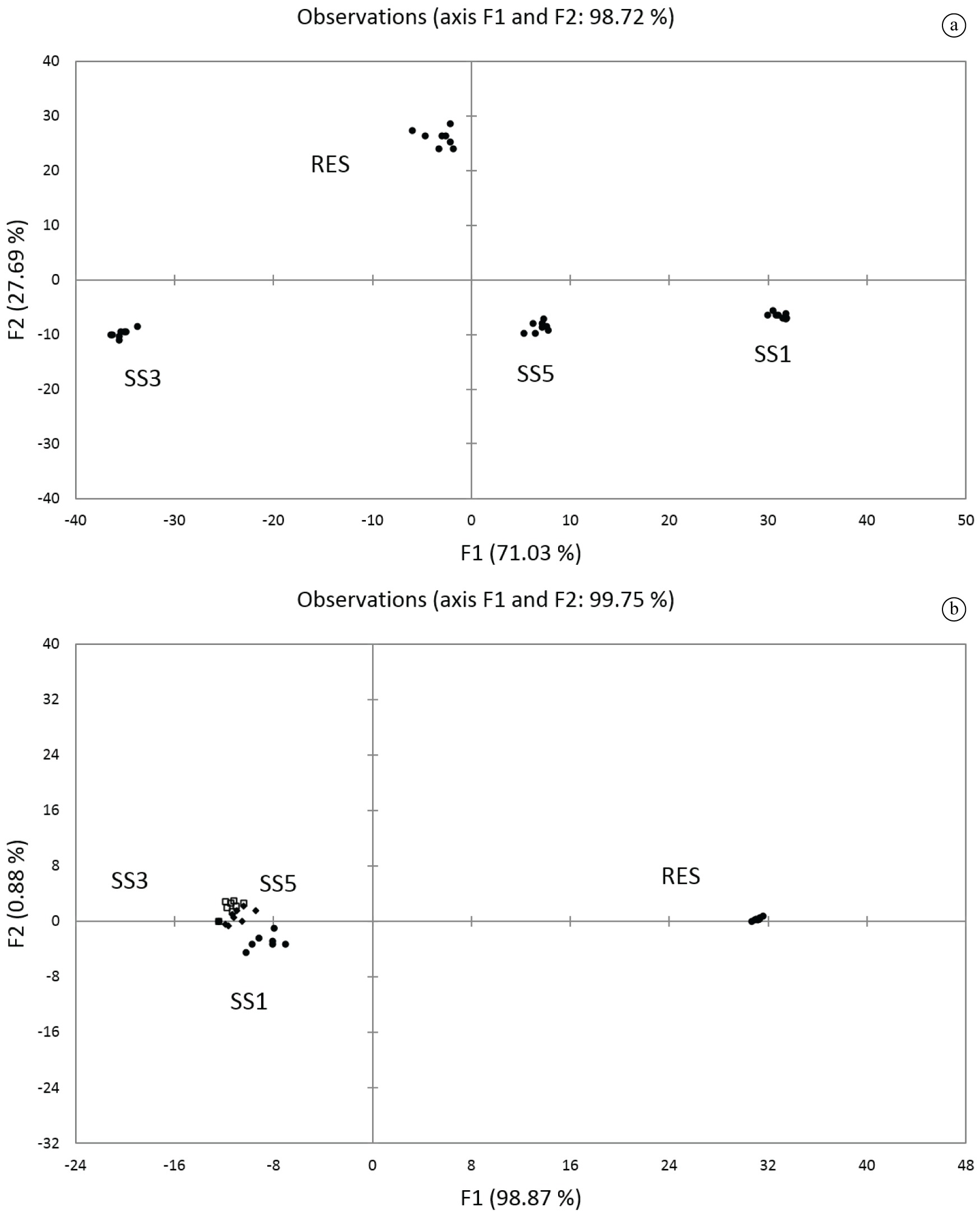Abstract
Macrophytes may constitute an important resource for several chemical, physical and biological processes within aquatic ecosystems. This study considers that in tropical reservoirs with low retention time and with low values of shoreline development (DL), the expansion and persistence of aquatic macrophytes are mainly reported to local conditions (e.g., hydrodynamic and wind exposure) rather than trophic status and depth of the euphotic zone. In this context, this study aimed at describing and comparing the incidence of aquatic macrophytes in a throughflowing, non-dendritic tropical reservoir. During February 2006 to November 2007, eight limnological surveys were performed quarterly within the Ourinhos Reservoir, and in the mouth areas of its tributaries. At the six sampling stations 30 variables were measured. The number of sites with plants varied between 21 and 38 and at the end of the 1st year the total richness was found. The sampling survey outcome the recognition of 18 species of aquatic macrophytes; Cyperaceae (2 genera and 1 species), Pontederiaceae (3 species) and Onarograceae (3 genera) were the families with higher diversity. Seven species (Typha domingensis Pers., Myriophyllum aquaticum (Vell.) Verdec, Salvinia auriculata Aubl., Eichhornia azurea (Sw.) Kunth, Eleocharis sp1, Eichhornia crassipes (Mart.) Solms, Oxycaryum cubense (Poepp. & Kunth) Lye) always were present and were more frequent in the sites. The occurrence of emergent species predominated (45.9%), followed by submersed rooted (24.5%), free floating (19.5%), floating rooted (9.7%) and free submersed (0.3%). Although limnological variables and the distribution of macrophytes have discriminated the same sampling points, the stepwise multiple linear regressions did not pointed out strong correspondences (or coherence) among the most constant and distributed macrophyte species and the selected limnological variables, as well the trophic statuses. Seeing the low relationship among limnological variables and macrophytes distribution, in the case of Ourinhos Reservoir, the results pointed out that the water turbulence, low DL and wind exposure are the main driving forces that determine its aquatic plant distribution, life forms and species composition.
Keywords:
aquatic plants; biodiversity; population dynamic; drive functions; limnological constrains; Paranapanema River; Ourinhos HPP

 Thumbnail
Thumbnail
 Thumbnail
Thumbnail
 Thumbnail
Thumbnail
 Thumbnail
Thumbnail
 Thumbnail
Thumbnail
 Thumbnail
Thumbnail





